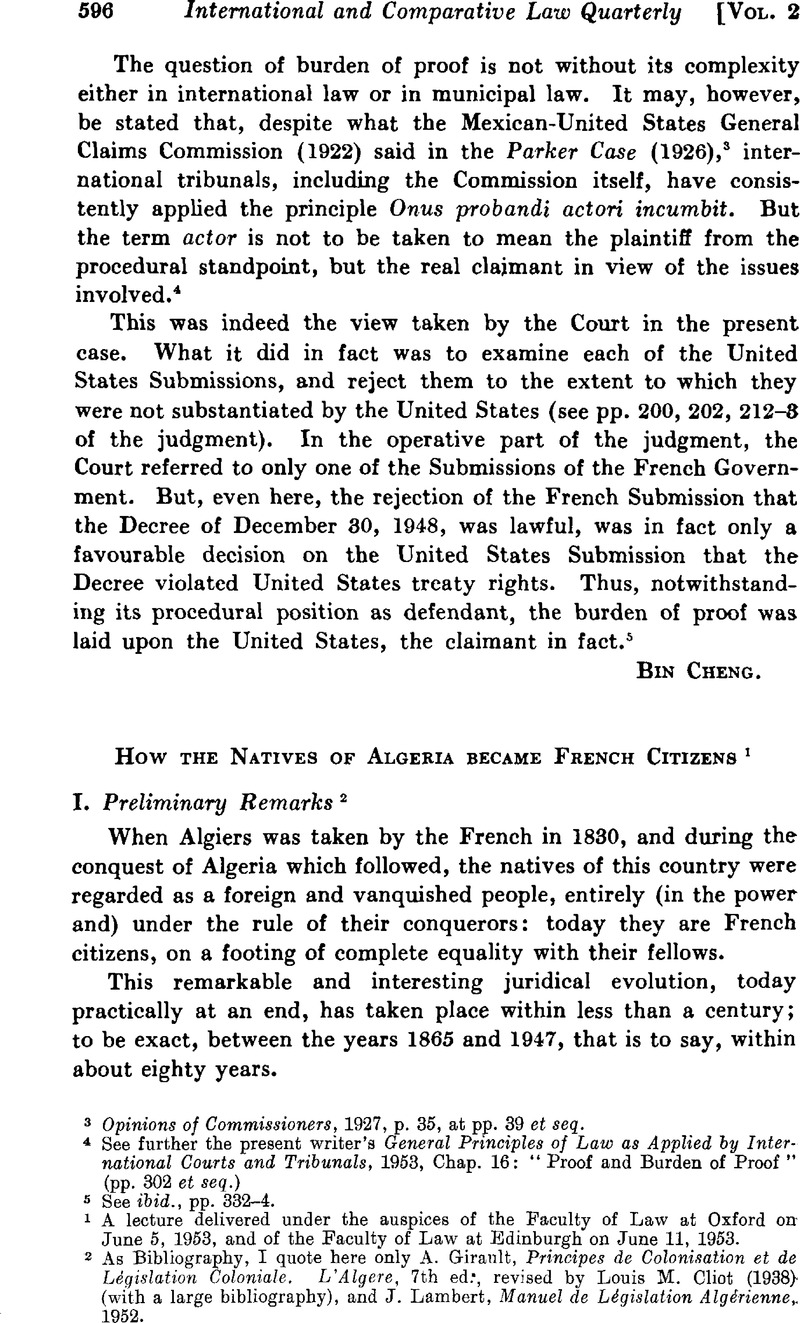Article contents
How the Natives of Algeria became French Citizens
Published online by Cambridge University Press: 27 January 2016
Abstract

- Type
- Notes
- Information
- Copyright
- Copyright © British Institute of International and Comparative Law 1953
References
page 596 note 1 A lecture delivered under the auspices of the Faculty of Law at Oxford on June 5, 1953, and of the Faculty of Law at Edinburgh on June 11, 1953.
page 596 note 2 As Bibliography, I quote here only Giranlt, A., Principes de Colonisation et de Législation Coloniale. L'Algere, 7th ed., revised by Cliot, Louis M. (1938)Google Scholar (with a large bibliography), and Lambert, J., Manuel de Législation Algérienne, 1952Google Scholar.
page 598 note 3 The Northern Territory extends over an area of 200,000 square kilometres. (England and Wales 150,000 square kilometres.)
page 600 note 4 For a small surviving difference in the composition of juries, see Lambert, p. 432.
page 601 note 5 Like Ceuta and Melilla, for example, in Spanish Morocco, which are part of Spain.
page 604 note 6 In practice, Moslem citizens in Algeria are still favoured on two other counts: (1) very few of them are conscripted (see above); (2) the “Legion of Honour” is still granted (even lavished upon) them more liberally than to French citizens by birth, as, indeed, had already been the case for a long time before 1944 (see above).
- 4
- Cited by




